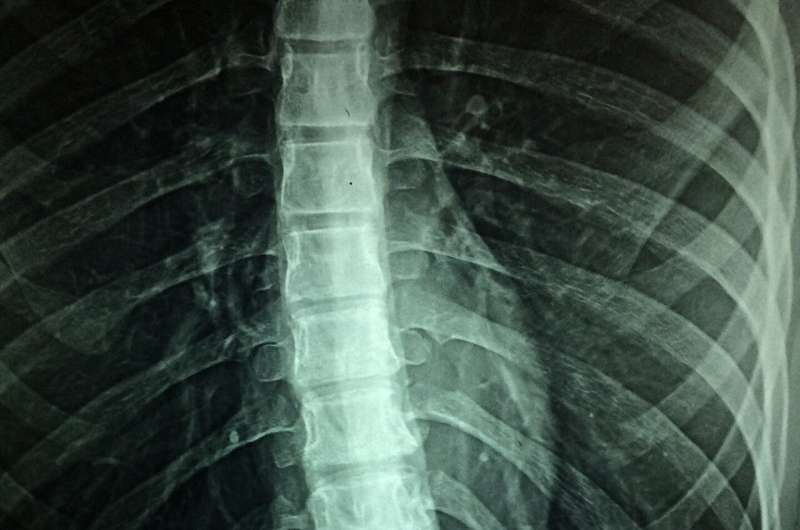This article has been reviewed according to Science X's editorial process and policies. Editors have highlighted the following attributes while ensuring the content's credibility:
fact-checked
peer-reviewed publication
trusted source
proofread
Spinal cord formation in the embryo: The role of a protein family identified

Work by the team of Dr. Frédéric Charron recently published in The Journal of Neuroscience, identifies the fundamental role of a family of proteins, the β-arrestins, in the development of the nervous system at the embryonic stage.
Charron is Director of the Molecular Biology of Neuronal Development Research Unit at the Montreal Clinical Research Institute (IRCM) and Research Professor in the Department of Medicine at the Université de Montréal.
Currently, our understanding of the mechanisms involved in nervous system development is incomplete, hampering the development of effective therapies to induce the regeneration of nerve connections following spinal cord injury.
This breakthrough in knowledge, a result of the work carried out by doctoral student Rachelle Sauvé, in collaboration with Steves Morin, a former research assistant, and Dr. Patricia Yam, in Frédéric Charron's laboratory, represents an important insight into the role of β-arrestins in the formation of the nervous system.
"This new understanding opens up new avenues for exploring the mechanisms that may lead to the regeneration of nerve connections following spinal cord injury," explains Charron. And the more we can shed light on these mechanisms, the more we'll be able to act to correct the sequelae resulting from injury."
Role of proteins in axonal guidance
During embryonic development, neurons extend their axons, long cellular cables that link specific areas of the body together, establishing nerve connections.
The processes that direct axon extension and guide its navigation is called axon guidance. Among other things, axon guidance connects each neuron to its specific target. It is therefore crucial to the proper development of the nervous system.
Various guidance molecules, such as Sonic hedgehog, direct axons to their targets, acting like signposts to guide axons to their destination. However, the detection of these guidance molecules by axons requires a complex molecular machinery that is yet to be fully uncovered.
Charron's team has demonstrated, for the first time, that β-arrestin proteins act as adapters between Smo and SFKs proteins, two crucial components of axon guidance. Like an electronic adapter without which it would be impossible to connect your phone to a power socket, β-arrestin proteins enable Smo and SFKs proteins to interact with each other.
Thus β-arrestins link the detection of guidance signals received on the surface of the neuron to crucial intracellular proteins required for axon guidance.
More information: Rachelle Sauvé et al, β-arrestins are scaffolding proteins required for Shh-mediated axon guidance, The Journal of Neuroscience (2024). DOI: 10.1523/JNEUROSCI.0261-24.2024



















